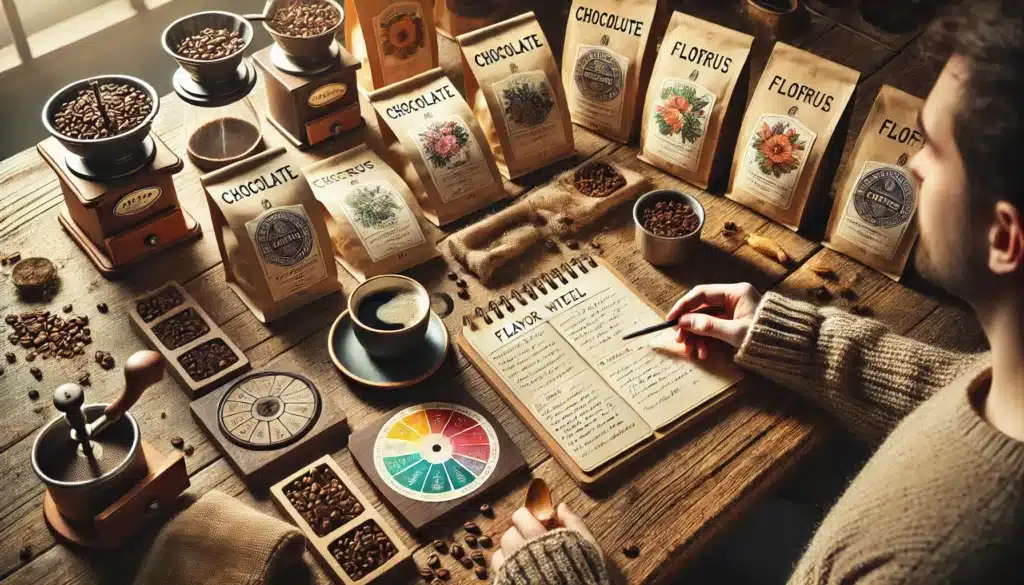Choosing the right coffee isn’t about luck — it’s about knowing your palate. Whether you prefer bright citrusy flavors or rich chocolate notes, there’s a coffee out there that matches your taste perfectly. The key is to understand the characteristics that define a coffee’s flavor and how they align with your preferences.
In this guide, you’ll learn how to identify what you like in a cup and how to choose beans, roasts, and brewing methods that bring out those flavors.
1. Know Your Taste Preferences
Start by asking yourself:
- Do you like fruity, tangy flavors or more nutty and smooth profiles?
- Do you enjoy bold intensity or a gentler, mellow experience?
- Are you drawn to sweetness, bitterness, or acidity?
Your answers will guide you toward the right coffee profile.
2. Understand Coffee Flavor Profiles
Coffee can have notes of:
- Fruit: berries, citrus, stone fruit
- Chocolate and nuts: cocoa, hazelnut, almond
- Floral and tea-like: jasmine, bergamot
- Spices and earth: clove, cinnamon, tobacco
Most specialty coffee bags describe their flavors — read them like wine labels and take note of what attracts you.
3. Explore Different Origins
Coffee origin plays a huge role in flavor:
- Ethiopia: floral, fruity, bright acidity
- Colombia: balanced, sweet, citrus notes
- Brazil: chocolatey, nutty, low acidity
- Sumatra: earthy, spicy, heavy body
Start sampling single-origin coffees to learn which countries suit your taste best.
4. Consider the Roast Level
Roast affects both flavor and intensity:
- Light roasts: bright, acidic, complex — ideal for exploring origin flavors
- Medium roasts: balanced, sweet, and round
- Dark roasts: bold, smoky, bitter — with less origin character
If you like lighter, vibrant notes, go for light or medium. Prefer intense and rich? Try dark roasts.
5. Choose Your Brew Method
Different methods highlight different aspects of coffee:
- Pour-over (V60, Chemex): clarity, acidity, aroma
- French press: body, richness
- Espresso: intensity, crema, mouthfeel
- Cold brew: low acidity, chocolatey smoothness
Match your taste to the method — and experiment often!
6. Look for Tasting Notes on the Label
Specialty roasters often include tasting notes on the package. Some examples:
- “Strawberry, rose, honey” = delicate and floral
- “Dark chocolate, almond, molasses” = rich and sweet
- “Green apple, lemon, jasmine” = bright and crisp
Let these notes guide your choices and explore different combinations.
7. Pay Attention to Acidity, Body, and Sweetness
These three core attributes define a coffee’s structure:
- Acidity: gives brightness and liveliness
- Body: the weight and texture in your mouth
- Sweetness: balances bitterness, adds depth
If you dislike sharp flavors, avoid very acidic coffees. Prefer thick and creamy? Look for fuller body.
8. Start with Sampler Packs
Many specialty roasters offer sampler kits with small bags from different origins or roast levels.
This is a great way to:
- Explore without committing to large bags
- Taste side-by-side
- Discover unexpected favorites
Keep notes on each coffee you try for future reference.
9. Trust Your Palate, Not Just Reviews
Coffee reviews can be helpful, but they’re not the final word.
Your taste is personal — and what one expert calls “funky and fermented,” you might find deliciously fruity.
Build confidence by tasting intentionally and making your own judgments.
10. Keep Exploring and Enjoy the Journey
Your palate evolves over time. A coffee you disliked a year ago may become a new favorite.
Stay curious. Try new regions, roast levels, and brewing methods. The world of coffee is vast — and the best cup is the one that brings you joy.
Final Thoughts: Taste, Track, Repeat
Choosing the perfect coffee for your palate is a journey of exploration and self-discovery. With every sip, you get closer to understanding what you truly enjoy. Keep tasting, stay curious, and don’t be afraid to break the “rules.” In coffee, pleasure is the ultimate guide.







